Dhaka's 'Janjot': A policy panacea
The ever worsening traffic and environmental conditions recently drove people clamour for “Save Dhaka”. Perhaps, rightly. The overall environment is characterised by 'janjot', costly delays in movement, poor traffic management, conflict of jurisdiction and poor coordination among concerned agencies and, capping it all, by noise and environmental pollution. Popular expectation, conceivably in some quarters, is to have many flyovers, underground railways, overhead metros, elevated expressways, BRTs/MRTs etc. and thus allowing shiny private cars speed through the streets of a glittering capital city, even though the country outside is submerged in poverty and deprivation. Economists, however, are likely to argue otherwise, and would seek alternatives by way of making the most out of limited resources, bring about efficiency and enhanced productivity, secure adequate returns to the needed investments and, to which end, would advocate policies based on principles and realities, thus keeping the cost of transport for passenger or commerce as low as possible.
Such policy stance may bring about some respite to the current suffering of the hapless Dhaka city dwellers and, importantly, secure at least some measure of equity and distributional justice. Complaints of 'disparity'-- in economic development between urban and rural, and among districts and regions -must not come back to haunt them again, defeating their aspiration for a possible middle income Bangladesh in the not too distant a future.
Impact of population growth
By definition Dhaka's 'Janjot' is not one of a typical traffic congestion problem. It is in fact a gridlock, akin to, in local jargon, 'Janjot' in extreme form. Hence appropriate solutions are bound to be somewhat radical which need to be pursued with vigor and determination.
First though, the sources of the problems have to be identified and solutions sought. By all accounts, the main source of the problem is city's rapid population growth, and growth in the population of motorised vehicles, in relation to its size, and its length and breadth, reflected in the availability of limited road space which is compounded by many other factors, including inadequate traffic regulation and scant attention to whatever existing, and rampant recourse to traffic indiscipline among the majority of the motorized vehicle owners.
The population problem directly emanates from the fact that Dhaka is the capital city, seat of all decision making and all powers -- political, administrative, financial etc. -- are concentrated there. All central public services for health and education, in the area of trade and commerce, even the ones for sports and 'haj' are located in Dhaka. There is thus a popular perception for the place having endless job opportunities, and that nothing can be accomplished without someone's approval from there.
The Prime Minister (PM), however, has recently stated that she would favour devolution of powers, and that she would empower the local elected bodies, like the Upazila Parishads, to be the main instruments of undertaking development work. This is most encouraging. There is also a measure of bipartisan stance, as all the major political parties are committed to abide by the country's constitutional provisions to support the local bodies at Union, District and Divisional levels. The concerned experts have opined that country's GDP can be increased by about 2 percent if the country's elected local bodies are strengthened and empowered to undertake local development work. For it is accepted that, at the local level, they know better as to what their problems and priorities are, opportunities available, technical methods suitable for them, and that they are themselves in a position to plan and execute their local development undertakings.
Experts also say that Dhaka's prevailing 'janjot' is eating into the vitals of the city dwellers, translated into loss of at least two percent of the country's GDP. It thus looks that the country's march towards GDP's annual growth at a level of 8/9 percent is entirely attainable sooner than otherwise possible, given the policy change direly needed in seeking decentralised approach to development. There must be a concerted effort to attract back the unemployed and the city's slum dwellers, in millions, by creating jobs in the country side. Also some of the operating Ministries and Directorates may be located outside Dhaka, and the relocated central government offices may be empowered to act independently but within the policies already adopted by the central government.
Similarly, some of the processing industries, like garment industries, may be given incentives to take them out of the capital, as much as possible, and future ones allowed to be established outside only.
Therefore, it has to be recognized that the first essential step by way of solving Dhaka's 'janjot' would be to bring down the level of population, given its size, it can optimally cater for. This would require policy support at the macro (socio-economic) level followed by firm political commitment and direction. For economists are likely to argue that big lumps of investments in infrastructure development may not be translated into commensurate level of benefits unless based on sound principles and policies, consistent with national goals of economic growth and poverty reduction.
Kolkata's performance, under the jurisdiction of Greater Metropolitan Development Authority, may be an eye opener. Its population, according to 2011 Indian census, grew, on average, at a rate of 19.9% in 1991; 19% in 2001; and 7-6% in 2011. Kolkata's area within the Municipal Corporation is 185 sq. km. Its population was 5.08m in 2009, reduced to 4.5 million in 2011.This is an out come, it is claimed, of significant policy changes, through land reforms and concentrating in rural based development work undertaken over a long period.
There is a consensus among development experts that combined with improved agriculture production and development of SMEs -- as opposed to implementing mega projects- all around the country, is perhaps clue to the tackling of the country's problem number one which is unemployment. This would potentially also attract back lot of the unemployed languishing in Dhaka, sometimes engaged in criminality, and result in less influx of youth in search of opportunities in Dhaka. This policy prescription alone may prove to be a significant non-transport contributor towards tackling Dhaka's 'Janjot'.
Road and congestion pricing
Principal source of 'Janjot' is directly attributable to the rapid rise of population of motorized vehicles too, especially of ownership of private cars, in relation to the limited road space, and the prevailing road user charges not reflected in the economic and social cost the vehicles are inflicting on the community. Road pricing of road services call for the road user meet the cost of road provision and its upkeep. It calls for serious reflection as to the extent of price escalation that has taken place for Dhaka's real estate property and its rental income, indicating its scarcity value. Thus the cost of road use should also increase in proportion to the land or space value of roads, which should also be reflected in the road user charges. The congestion pricing is the most effective necessary tool introduced every where, in developed as well as in developing countries, to optimize resource allocation, and bring about efficiency in the use of the limited space for storage or parking.
Given Dhaka's acute 'Janjot', the methods applied in the city state of Singapore may be worth considering. It recognises its finite size, size of its population, and the desired speed and comfort of passenger traffic and, accordingly, instituted a pricing policy worthy of emulation. It has introduced a Vehicle Quota System (VQS) under which one has to obtain a Certificate of Entitlement (COE) through a bidding process which, in essence, controls acquisition of a motorised vehicle, subject to availability of space, and at a competitive price.
The issue for Dhaka is to introduce appropriate pricing policies based on economic principles, equally applicable among all countries even with varying income levels. Combined with road and congestion pricing, import duties on private cars will need to be raised to a level which would curtail motorised vehicles' unregulated entry, adding to congestion.
In a situation where the present car riders can hardly move normally, it is reported that more than one thousand five hundred motorised vehicles are registered everyday, a clear case of policy failure.
Also, there has to be rational use of the transport facilities, particularly of the existing road space in the congested areas. Ownership of private cars represents great convenience and expanded opportunities. The benefits need not be altogether forfeited; but neither they be provided at the expense of the less fortunate or the general public who otherwise own the road space.
At present, extravagant use of road space per passenger by private cars imposes heavy cost of exclusions, delays and discomfort on other road users. Introduction of a strong pricing approach, even if it looks radical, will have to be adopted which will take the form, among others means, of daily licenses for commercial or central area use and heavy parking charges etc.
In addition, it should include environmental costs, on account of air and noise pollutions, which are inflicted on the population. Road user charges needs to be instituted comprehensively to cover these and peak-hour use of the congested area. Charging of economic prices for the use of congested road space will also reduce misallocation of resources by lessening the pressures to purchase and run private vehicles for uneconomic trips, to construct expensive urban roads and to develop additional urban sprawl.
However, by far the most effective solution to traffic congestion can come from control of car ownership and its use. This can be done through levying prohibitive level of import duties and restricted use of the cars.
More direct action is also needed to establish priorities for essential transport, and particularly for low-cost, high-volume public transport (buses) to carry workers to their employment. Specific physical measures are needed to shield buses from the interference and delays caused by other traffic.
Methods include reserved lanes or streets in highly congested areas for buses and other essential vehicles, priorities at intersections and access points, and facilities for quick turn-round at terminals. Pedestrians and cyclists typically account for the majority of all Dhaka's urban trips.
This recognition has important implications for traffic management and city's transport system planning. The domination exercised by the motorized transport, and reflected in the curtailment of sidewalks, needs to be curbed. Closing some central area streets to vehicular traffic at peak periods merits serious attention.
Management improvement and coordination of transport
Management weakness is all pervasive, significantly accounts for poor performance of Dhaka's transport operation. Improvements in efficiency of transport undertakings and their coordination are heavily dependent on better management of the assets and implementation of the regulatory provisions. There are weaknesses in institutional arrangements for transport planning, in coordination and management of transport services.
Due to inadequacy in traffic regulatory provision and poor implementation or enforcement of existing legal provisions, incidence of traffic accident is frequent. In fact, there are many regulatory policy measures which can make discernable level of improvements in the traffic situation. There is perhaps need for a single transport planning and coordinating body for the city, empowered adequately, and having authority to raise revenue to fund many improvement measures, without waiting for the annual central budgetary grants.
Institution building and improvement to policy environment are likely to make significant contribution to better infrastructure service provision. Better maintenance, improved traffic management, and securing private sector participation in some of the activities may also lead to improvement to the traffic scenario in Dhaka.
All these suggestions can be grouped together into a policy package, needing the government's ownership and strongest of support in their implementation. In view of the weak management, it may prove to be cost effective to hire a team of foreign experts from private sector, for a period of time, to operate the transport and coordination outfit, BRTA, etc. for example, and then hand over the task to the locally trained personnel.
Integrated urban development
There is close relationship between urban transport and city's physical urban form. Since Dhaka has grown, with population and population of motorised vehicles, its physical expense, in terms of length and breadth, being relatively small and surrounded in all sides by rivers and water bodies, it could not grow endlessly. It has virtually reached more than its saturation point, unlike Karachi, Delhi or Tehran which had space to expand significantly in almost all sides. Dhaka on the other hand has no such prospect of being able to spread or expand too far out, without impinging on the precious agriculture land. Old Tejgaon Airport, Tejgaon Industrial Area, Savar EPZ etc. are in the middle of the present Dhaka. The new (Kurmitola) Airport is on one side of the city, not far outside.
Therefore the situation calls for a combined approach to the city's desirable physical form and its transportation needs, recognising Dhaka's finite size and its road space, determining the level of population it can optimally accommodate and serve, and re-define its role as the functioning capital of the country. Thus, Dhaka's urban transport plans should be integrated with urban land use plans to support more efficient approaches to planning urban expansion. The city's redevelopment may limit trip lengths desirable, make sustainable modes convenient for users, and optimise, what is called, system integration.
Prospect for mass transit
Given the intractable condition of 'janjot' affecting Dhaka city, attention is inevitably directed to mass transit allowing for separation of different types of traffic, particularly public transport, so as to reduce interferences between vehicles of differing characteristics and ensure essential services. The potential is important but its limitations have to be considered. There are some basic difficulties of mass transit solution which needed to be recognized.
First, minimum capacity of any separate right-of-way established for public transport is very large while costs of construction are inevitably very high, such as the capital cost of over-head or underground metro. Surface track cost a bit less but costs per passenger miles could still be prohibitive in view of already congested right of way and needing fresh land acquisition.
A high average of peak and off-peak traffic will be required to justify such an investment, and to help defray the costs of rolling stock and staff needed for the peak period. The second difficulty is that separated rights-of-way, particularly for rail traffic, are constrained in the sense that once an alignment or route has been developed, it is fixed in location and limited as to type of traffic.
In view of the cost capacity constraint, feeder services are required to extend the segregated track services into areas of low traffic density. Further, the need for interchanges, and the necessary delays caused by starting, stopping, and taking on passengers mean average speeds of travel by mass transit do not in practice rise much above 20 miles an hour, at least where stops are frequent which, in all probability, will be the case in Dhaka.
Besides, the space specificity of urban railways and metros can create a serious danger of accentuating the traffic problems that they are designed to solve.
Third difficulty will arise from a relatively large amount of investment and given the likely public sector management, not known for efficiency, its operations may have to be endlessly subsidised.
Lastly, in view of Dhaka's relatively finite length and breadth, the city size may not allow for benefits to be fully reaped from an operation not enjoying an economy of scale, a mass transit operation is otherwise inherently designed for. Transport planners or development partners must warn the government, anxious for mass transit, of the inevitable need for annual subsidy, it is already burdened with, in respect of almost all other public sector entities, such as the Bangladesh railways.
To escape from the constraints of urban underground rail or road metro system and yet reap the advantages of separated right-of-way, segregated bus-ways (BRT) may provide an attractive alternative for coping with high volumes of passenger traffic for the metropolitan Dhaka city. This may prove more viable where, given the average income level, traffic will be heavy. The advantage will be that ordinary buses can also be used, which can enter and leave the bus-way to provide feeder service. Moreover, a separate right-of-way may not be needed for anything like the whole length of the route, nor for the entire day, nor be so exclusive as for the rail. Other public vehicles such as minibuses and taxis, or essential service vehicles such as ambulances, can be permitted to use the same bus-ways where excess capacity above bus use is available.
Finally, it may be stressed that transport provision should not merely be demand driven, it has to be technically compatible with local condition, financially viable and economically justified, given the opportunity cost of the capital. In Dhaka's condition, one single measure, such as mass transit may not solve the congestion problem. It has to be a combined approach, as it happens to be the case in the rest of the world.
Rickshaw operation
Of the greatest importance in its potential for cheap and essential (non-motorised) rickshaw transport is the provision for their separate tracks and delineation of the areas of their operation, without compromising the essential pollution free passenger transport services that they provide, day and night, in every nook and corner of the city, where they are best suited, and where motorized transport is a nuisance.
Although subject of frequent criticism for adding to Dhaka's 'Janjot', many studies confirmed that rickshaw industry perhaps offers by far the most cost effective, efficient, socially desirable, and environmental friendly, mode of transport. In terms of employment effect, capacity utilisation, and returns to investment, its performance is in fact worthy of emulation by other enterprises.
There is a case for rickshaw to have segregated track and delineated area of its operation to avoid traffic conflict and congestion. It should be accepted as feeder services to the arterial bus (BRT) and metro rail services, and should remain the main source of short-haul localised services, within major residential areas, such as, Gulshan/Banani/Baridhara, Dhanmondi/Md.pur/ Mirpur, etc. where motorised vehicles should be restricted by speed and costly limited parking space. In the older Dhaka area, rickshaw operation should be the main mode of transport reaching every nook and corner, where operation of motorized form of transport may need to be restricted limiting its parking, and commercial vehicles by its time of pick-up and delivery.
Subject to detailed studies, appropriate regulatory measures may be adopted for a smooth rickshaw operation through out the city, complementing the motorised form of transport. A partial case for motorising, by use of electricity, and for adopting a more compatible design, may also exist which may be studied further.
Efforts mounted to tackle the 'Janjot'
In response to the official request, the World Bank (WB) appraised the Dhaka Urban Transport Project in December 1998. In post independence Bangladesh, this perhaps represented the first comprehensive attempt towards tackling city's congestion problem, developed into a 'Janjot' already. Hint of that comes out of the development objectives set for the project and the project components designed for implementation (as at Annex attached). During the mid-term review in February 2002, the Bank had to revise the scope of the project on the basis of (i) “contribution that the project would make to development objectives”, and (ii) “probability of implementation within the remaining project period”. The rationale is not entirely clear. In consequence, it meant that a project estimated originally to cost $ 234.2m ( IDA 177.0m) was wrapped up within $ 140.00m (IDA 107.3m) and that a precious amount of $ 79.5m IDA fund (almost grant like) was not utilised for the alleviation of the 'Janjot' for which the project was originally designed.
The Bank, however, prepared an Implementation Completion Report in December 2005 in which it admitted flaws in project preparation, saying that a “formal Quality at Entry Assessment was not undertaken”, and that “there were significant shortcomings in identification, preparation and appraisal” for the following reasons:
(i) The project was highly complex by involving many different ministries and implementing agencies. …The support for public transport service improvements was inadequate in the project design.
(ii) Poor institutional arrangements, as between Dhaka City Corpn.(DCC) and Dhaka Transport Coordination Board (DTCB), without the authority needed for coordination, and the Project Implementation Unit of DCC created was outside the mainstream. Institutional strengthening measures were not well thought out, and,
(iii) Weak borrower ownership and commitment displayed. Among others, the weak leadership at DTCB was not addressed.
The study of the project components and those subsequently adopted (as at Annex) would indicate that a comprehensive intervention was required. However, the project implementation completion report claimed its achievement was “moderately satisfactory” and that the project's development objectives “have been broadly achieved”. In terms of specifics, it claimed that there has been 'corridor and intersection improvements, rehabilitation of three inter-district bus terminals, grade separation of Mohakhali Flyover and pedestrian facilities improvements undertaken have all contributed to the “better urban transport infrastructure and its service level”.
Among all, “one of the largest improvements provided by the project is the signalization of the 68 intersections”. These statements on project outcome made in 2005 were perhaps acceptable then, but today, at project's mid-life (ending in 2024), a different picture emerges. In view of its restructuring, with some components dropped, for the remaining components, the ERR computed for the project's start up and completion were:
Given the declining trend in the project's rate of return, it is conceivable that even at mid-life virtually none of the components implemented was rendering the desired level of services. The WB approach was narrowly focused during project preparation, without recognizing the basic causes of the city's 'Janjot' and thus remedies offered did not prove appropriate, in fact thwarted by developments by population influx, and unregulated entry of motorised vehicles, among other reasons. It should have been recognized that Dhaka is surrounded by river and water bodies on all sides, its overall size is finite, its potential road space limited, thus it could not accommodate ever increasing size of population or number of motorized vehicles. An approach that infrastructure provision alone will tackle Dhaka's 'Janjot' is not proven by performance of the project. The city's population was 9 million at appraisal, now surged to almost 15 million. Consequently, perhaps none of the components of the project realised its full potential benefit. Physical improvements made have been overwhelmed by continued influx of population and population of motorised vehicles, resulting in 'Janjot,' witnessed today.
A democratically elected government is indeed anxious for a rapid solution to the problem. It has mobilized JICA to fund a 22km stretch of a metro rail at an estimated cost of about $ 2.7b which will take 5 years to complete. The government has just signed a financing agreement with ADB for funding a Greater Dhaka Sustainable Urban Transport Project, at $255.00m, it will provide a 20km BRT between Gazipur and the northern fringe of present Dhaka. A project for an elevated expressway, 21km long, at a cost of $2.5b is under consideration to be funded under some BOT scheme. Apart from these relatively large projects, there are presumably other interventions, both in the area of maintenance and development or capacity expansion, seeking to alleviate the city's 'Janjot'. While all these are worthwhile efforts, all time consuming, and calling for relatively large lump of infrastructure investments, there are issues of policy and priority, both at micro and macro level. And there are options as between going for greater Dhaka, envisaged under STP study, and bringing about self-sustaining development around the 7 divisional headquarters, thus limiting the surge of the population towards greater Dhaka. These are issues which may be debated at national forum, with the concerned MPs making contribution to the debate.
Policy Panacea:
WB's comprehensive attempt at easing Dhaka's traffic congestion through a recent project intervention has had sub-optimal outcome. While there is urgent need to develop and modernize Dhaka's urban transport infrastructure for creating capacities, it is equally important that such efforts are made within a broad policy framework, addressing the fundamental causes of current inadequacies. It will be appropriate that the projects, for which funds have already been mobilised, such as from JICA, ADB, WB etc., should be expeditiously implemented and, at the same time, prevailing lacuna in policy matters should be addressed. To this end, it is matter of paramount importance that Prime Minister's recent indication in favour of a devolved and decentralized governance and administration, should be followed up. A policy which may redefine the role of Dhaka, as the country's capital, and the need to strengthen and empower the elected local governments who can more effectively create jobs and in fact attract back the unemployed from Dhaka, must be given a most urgent consideration.
In the same spirit, the choice between having a greater Dhaka and bringing about development centering around 7 divisional headquarters may be considered, thus allowing spread of development opportunities more equitably among regions. A new stance in development policy, if implemented with vigour and determination, can eventually make a significant dent in Dhaka's 'Janjot', in a more sustainable manner.
Some of the Operating Ministries and Directorates may be relocated outside Dhaka, the Agriculture Ministry be in Mymensingh, for example. Some branches of the central Ministries may be in the Divisional headquarters but empowered to take decisions, such as the passport offices. Some of the Ministers and officials may even be able to attend cabinet meeting through video-conferencing facilities. Other officials will remain available on-line.
Digital Bangladesh, as envisaged by the prime minister, can be put to full use and benefit for Bangladesh. Besides, the outlying districts are not too far, with which the government is already taking steps to improve connectivity, by road, rail, water and air. Decentralisation has the potential not only to lessen pressure on Dhaka but also to improve the governance, by taking the government at the door of the people.
Combined with the new development stance, as proposed, a strong congestion pricing policy, in the model of Singapore and other well managed cities, will be required to be implemented. However, with alternative transport options not yet in place, a new era of having to pay road user costs fully will have to be brought in gradually.
But there are other measures including import restrictions, entry of new private cars, and levying of high import tax, high registration fees, total ban on import of reconditioned vehicles, parking restrictions, etc. –all these must begin to be introduced right away. To this end, sustained media campaign may be launched, so that people get the message that the government is determined to alleviate their suffering from the prevailing 'Janjot'.
Issues relating to inadequate functioning of the Dhaka Transport Coordination Board, now an Authority, which was to be responsible for some of the critical aspect of project implementation for the improvement of transport management and operation should be examined and remedial measures taken. With Dhaka now split into two Corporations and their relationship with the ministry of communications, ministry of local government, Rajuk etc. may be revisited by the concerned agencies. Both the WB and ADB have emphasised on the issue of institution building and bringing improvement to the policy environment for a better infrastructure service provision.
A close relationship between Dhaka's desirable physical form and its transport needs has to be recognized. Dhaka's urban transport plans should be integrated with urban land use plans to support more efficient approaches to planning urban expansion. Various efforts towards some measure of coordination among various agencies, such as the Rajuk, municipal corporations, local government ministries and the ministry of communications, together with the relevant civil societies may be reexamined and proposals consolidated.
Notwithstanding some limitations of the mass transit operation, particularly of the underground and surface metro railways, mass transit in the shape of BRT is the basic minimum programme which may prove viable if managed well. In fact both the WB and ADB are poised to extend financial help. Should that comes about with soft loans under IDA and ADF windows, it would be worthwhile to go ahead. For Dhaka will almost unavoidably remain a large metropolis, needing some form of mass transit.
Dhaka's rickshaw is a blessing, in terms of employment effect, efficiency in operation, and providing feeder services to the arterial motorized bus or railway operation etc. Its area of operation may be clearly delineated, within each residential area.
It has to be recognised that some of the developed countries are introducing non-motorized transport. Apparently there has been some innovation by way of introducing a three wheeler, 'Easy Bike', battery operated, recharged overnight, and which carry 6 passengers. Some technical investigation may be carried out in the light of the Delhi's experience in this respect.
The writer is a Transport Economist. WB/IDB Retiree. Formerly, World Bank Economic Advisor, Government of Kenya., Senior Economist, I.D.B., Recently under ADB auspices, Development Budget Advisor, Ministry of Finance, Government of Afghanistan.
E-mail: [email protected]

 For all latest news, follow The Daily Star's Google News channel.
For all latest news, follow The Daily Star's Google News channel. 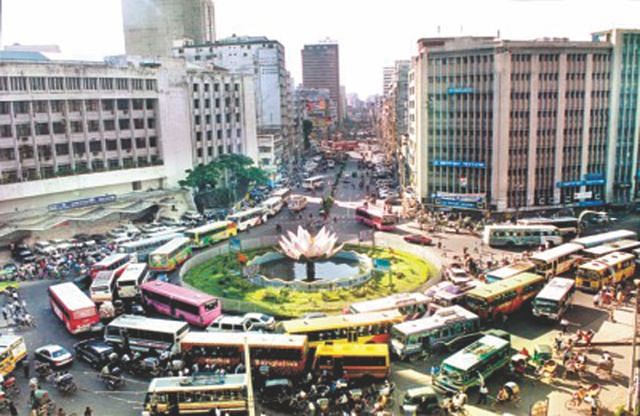
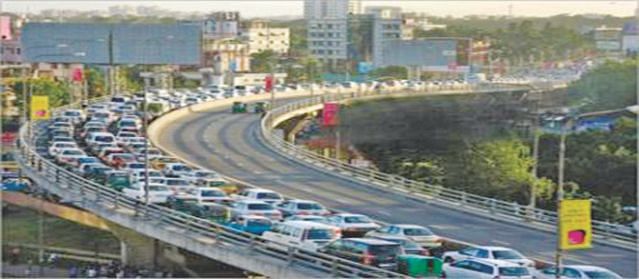
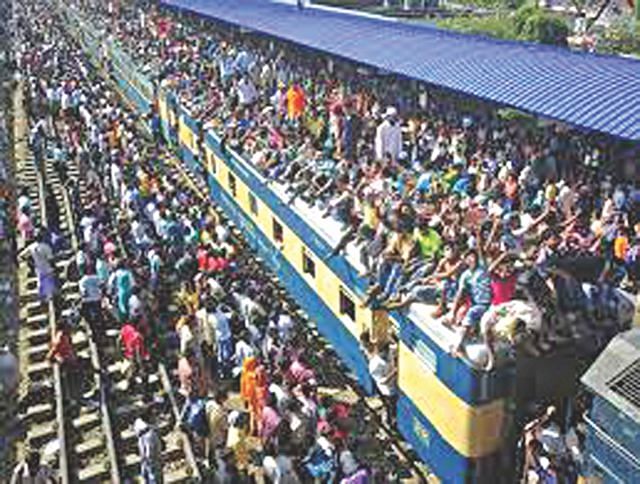
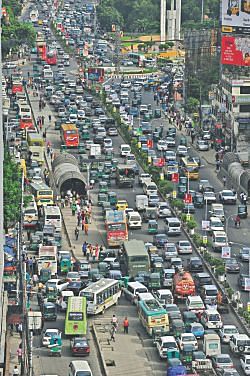
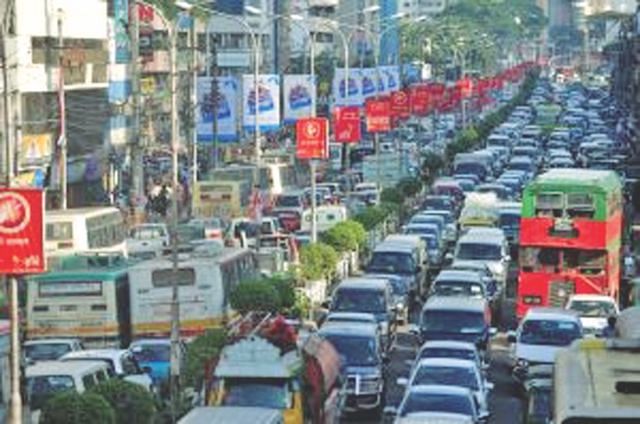
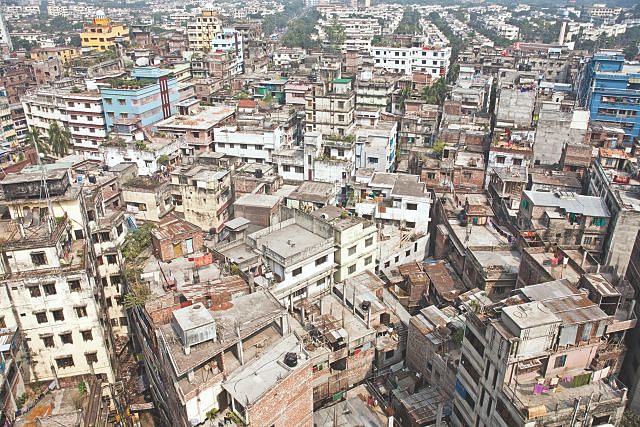
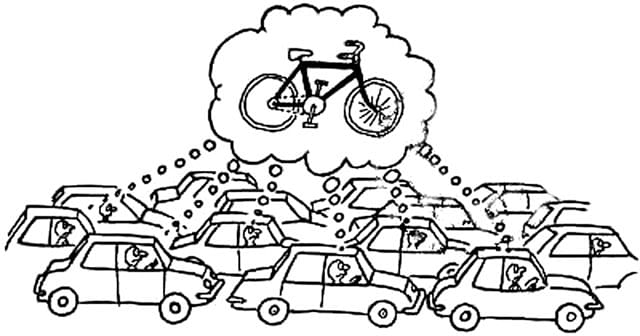



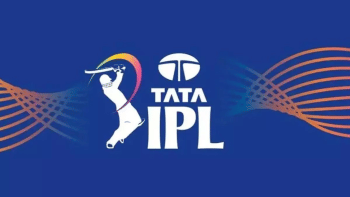
Comments